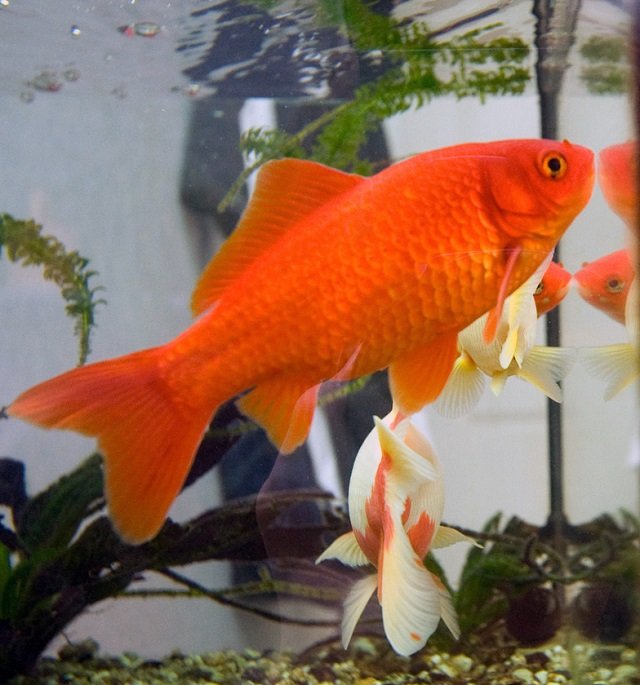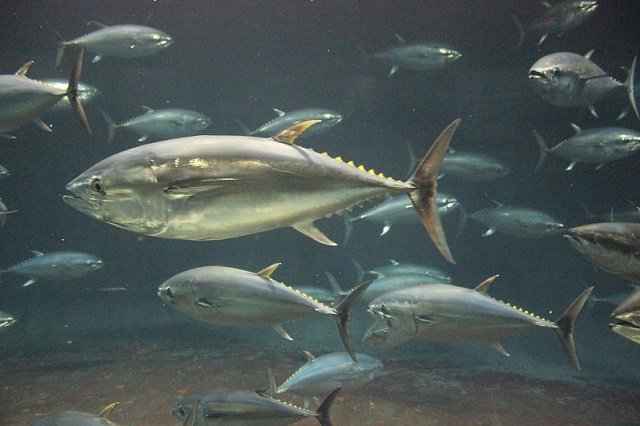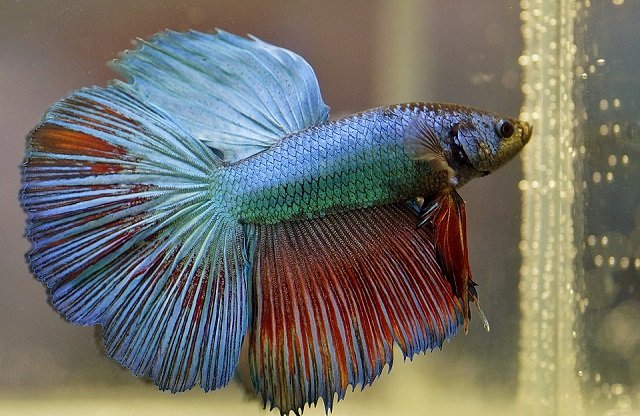
The goldfish (Carassius auratus) is not only one of the world’s most popular ornamental fish for its beauty and adaptability, but it also represents a species of high economic value for the ornamental aquaculture sector. To meet the demand for high-quality specimens, producers must master every stage of the production cycle, with spawning being a critical moment. Reproductive success depends on multiple factors, and one of the most influential is the choice of the medium or substrate where the fish lay their eggs.
A recent study published in the journal Sainmatika by researchers from PGRI University of Palembang investigated how different types of substrates affect the productivity of goldfish fry, with the aim of identifying the most efficient materials for breeders. The research analyzed four different materials: two natural (the aquatic plant Hydrilla sp and the “water cabbage” Pistia stratiotes L) and two artificial (coconut fiber and knitting yarn). The results offer a clear guide to optimizing spawning techniques and improving cultivation profitability.
The importance of substrate in goldfish reproduction
The quality of a batch of fish begins with a successful spawn. The substrate is not a mere accessory in the breeding tank; it is the element that stimulates the broodstock to release and attach their eggs. A suitable substrate must be attractive to the female and provide a secure surface for the eggs to develop until hatching.
The study started from this premise, seeking to scientifically determine which characteristics make one substrate superior to another in terms of productivity, by evaluating:
- The number of eggs that adhere.
- The percentage of fertilized eggs.
- The hatching rate.
- The final survival of the larvae.
Study methodology: Testing four materials
To conduct the research, the scientists used a completely randomized experimental design with four treatments and three replicates each. The researchers used 12 females and 24 males of goldfish with mature gonads, maintaining a 2:1 ratio in each aquarium to ensure natural fertilization.
The four substrates evaluated were:
- P1: Coconut fiber.
- P2: Knitting yarn.
- P3: The submerged aquatic plant Hydrilla sp.
- P4: The floating aquatic plant Pistia stratiotes L.
Each substrate was placed in a prepared aquarium, and after spawning, data were collected on the number of attached eggs, the hatching rate, and the survival of the larvae, in addition to constantly monitoring the water quality.
Which substrate proved to be the most effective?
The study’s findings showed very significant differences among the substrates, pointing to natural aquatic plants as the clear winners in almost all productivity indicators.
Stay Always Informed
Join our communities to instantly receive the most important news, reports, and analysis from the aquaculture industry.
Egg adhesion: Natural aquatic plants lead
The first indicator of success was the number of eggs that the females attached to each material. The results were conclusive:
- The Pistia stratiotes L (P4) substrate was the preferred one, accumulating an average of 1,959 eggs.
- It was closely followed by the Hydrilla sp (P3) substrate, with an average of 1,925 eggs.
- The artificial substrates lagged far behind, with 1,588 eggs on the knitting yarn (P2) and only 1,303 on the coconut fiber (P1).
The researchers attribute this success to the physical characteristics of the plants. Both Pistia stratiotes L and Hydrilla sp have soft, branched, and abundant roots and leaves, making it easier for the females to swim among them and safely deposit their eggs. In contrast, coconut fiber and knitting yarn have a stiffer and harder texture, which makes it difficult for the eggs to adhere properly.
Hatching and survival rate: Where Pistia stratiotes L shines again
While getting a large number of eggs is important, the crucial part is that they hatch and the larvae survive. In these aspects, the natural substrates continued to show their superiority.
- The highest egg hatching rate was recorded in the treatment with Pistia stratiotes L (P4), reaching 78.54%.
- Hydrilla sp (P3) also achieved an excellent result with a 74.45% hatching rate. Again, the artificial substrates showed lower performance, especially the knitting yarn, with only a 57.42% hatching rate.
Regarding larval survival, the trend continued. The Pistia stratiotes L (P4) substrate achieved the highest rate, with an impressive 85.97% of surviving larvae. Although the statistical differences in survival were not significant among the four groups, the notably higher value in P4 suggests a more favorable environment for the early life stages. The high overall survival indicates that the larvae adapted well to the study’s environmental conditions.
Water quality analysis
Throughout the experiment, water quality parameters were maintained within ranges considered optimal for goldfish productivity.
- Temperature: Between 23.8°C and 26.9°C.
- pH: Between 6.25 and 6.92.
- Dissolved oxygen (DO): Between 6.03 and 6.67 mg/L.
- Ammonia: Between 0.34 and 0.42 mg/L.
Although the ammonia level was slightly higher than the recommended ideal (<0.02 mg/L), the fact that the fish spawned successfully and the larvae survived indicates that the overall water conditions were adequate and did not hinder the reproductive process.
Conclusions and implications for the fish farmer
The message of this study is clear and direct for any goldfish producer: the choice of substrate is a determining factor for reproductive success.
- Prioritize natural substrates: Live aquatic plants, such as Pistia stratiotes L and Hydrilla sp, are significantly superior to artificial materials like coconut fiber or synthetic yarns. Their physical structure is more attractive to females and safer for the eggs.
- Pistia stratiotes L as the best option: This floating plant not only attracted the most eggs but also facilitated the highest hatching and larval survival rates, making it the most productive substrate among those evaluated.
- Practical application: Aquaculturists looking to optimize their Carassius auratus hatcheries should consider incorporating Pistia stratiotes L into their spawning tanks. This simple technical modification, based on scientific evidence, can translate into a greater number of viable larvae per reproductive cycle, improving the efficiency and profitability of the operation.
Contact
Indah Anggraini Yusanti
Department of Fisheries Science, Faculty of Fisheries and Marine Science,
PGRI University of Palembang, Indonesia
Email : indahayusanti@gmail.com
Reference (open access)
Yusanti, I. A., Sofian., & Iswani, T. (2025). Utilization of Different Substrates on Goldfish (Carrasius auratus) Seeds Productivity. Sainmatika: Jurnal Ilmiah Matematika dan Ilmu Pengetahuan Alam, 22(1), 95-101. DOI: https://doi.org/10.31851/sainmatika.v2211.13781.
Editor at the digital magazine AquaHoy. He holds a degree in Aquaculture Biology from the National University of Santa (UNS) and a Master’s degree in Science and Innovation Management from the Polytechnic University of Valencia, with postgraduate diplomas in Business Innovation and Innovation Management. He possesses extensive experience in the aquaculture and fisheries sector, having led the Fisheries Innovation Unit of the National Program for Innovation in Fisheries and Aquaculture (PNIPA). He has served as a senior consultant in technology watch, an innovation project formulator and advisor, and a lecturer at UNS. He is a member of the Peruvian College of Biologists and was recognized by the World Aquaculture Society (WAS) in 2016 for his contribution to aquaculture.




